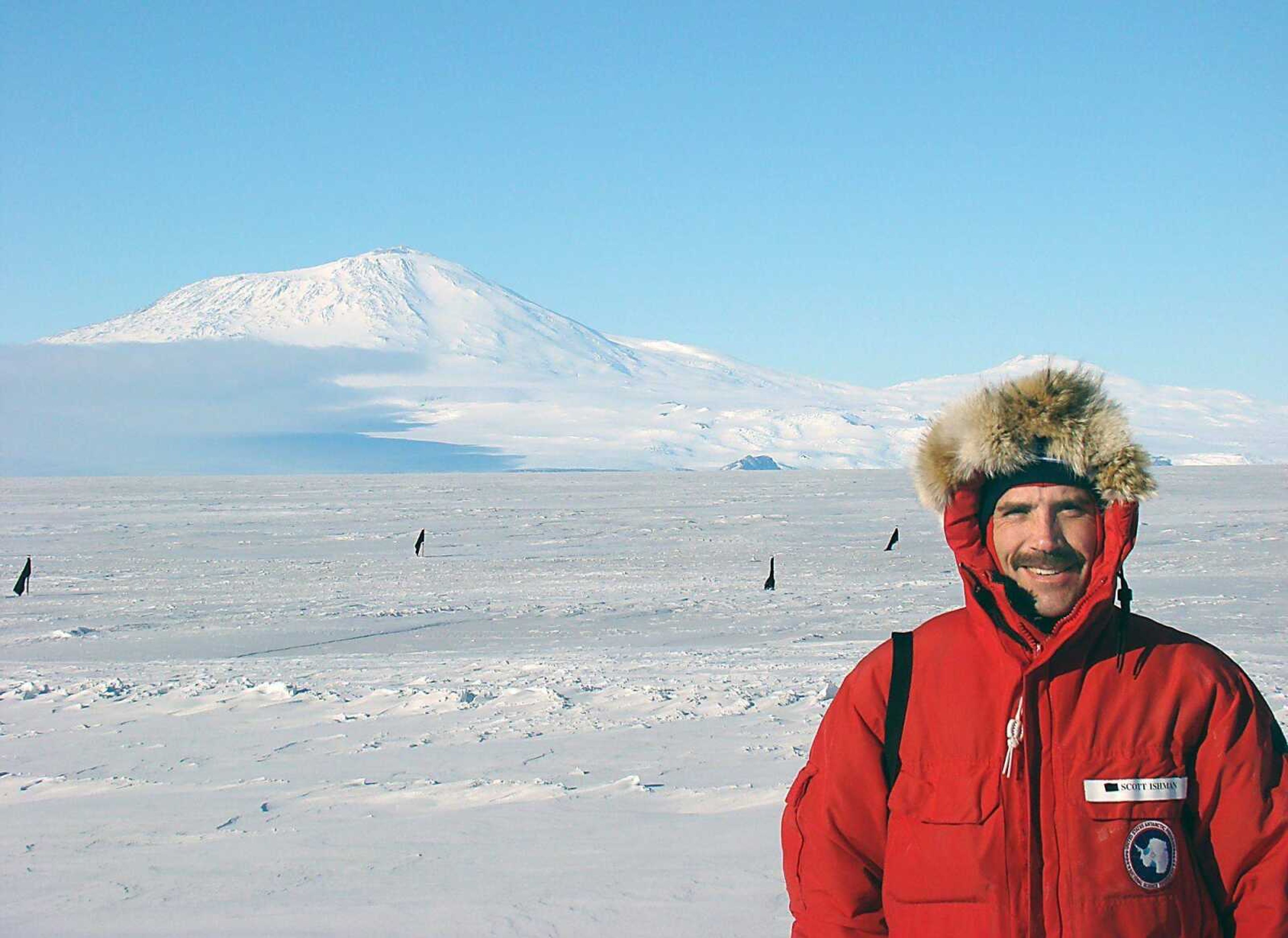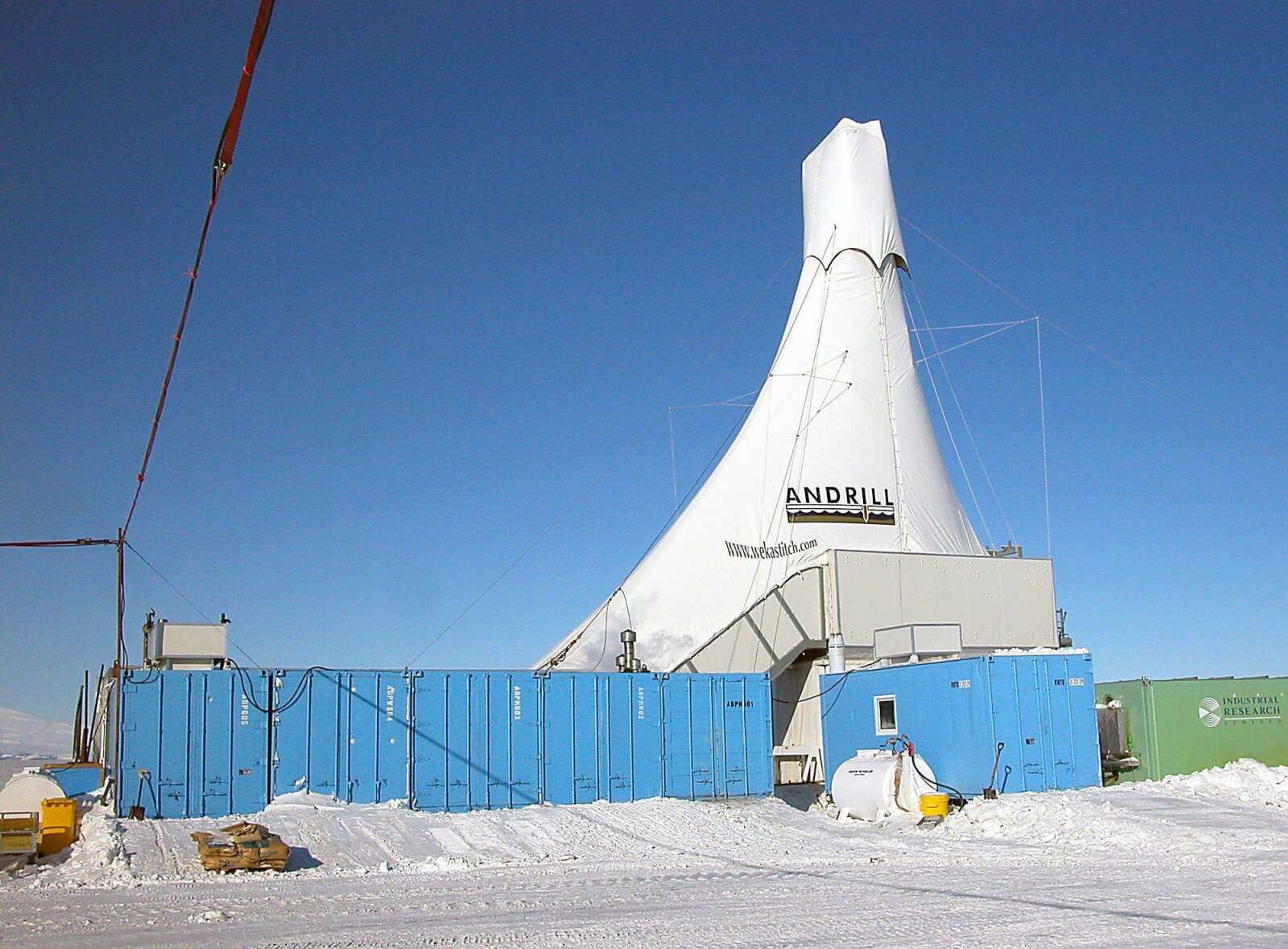During the past two years, scientists in Antarctica have drilled more than 4,215 feet into the Earth's core and more than 20 million years back into its sedimentary history in an effort to understand how the planet's climate has changed through geologic time. The object of their search this year, evidence of the changes that occurred 14 and 15 million years ago, has been called the Rosetta Stone of global climate change.
In the 1990s, the Cape Roberts Project brought up core from 17 million to 40 million years ago. Last year, the current project provided data from 13 million years ago to the present. The warmest part of the middle Miocene Epoch 14 to 15 million years ago could be the missing key to the geologic map scientists have been piecing together. During that period, the Earth was warmer than it is now and climate conditions in the Antarctic resembled those of southern Alaska today.
Establishing a chronology for the sequence of changes in the past is critical to understanding climate change today, scientists say.
Last week, a United Nations report warned that the world has a window of less than a decade to be able to reverse the current course of climate change. "There is now overwhelming scientific evidence that the world is moving toward the point at which irreversible ecological catastrophe becomes unavoidable," the report stated.
The Antarctic Geological Drilling Program (ANDRILL) includes scientists from the U.S., New Zealand, Germany and Italy. The second year of drilling concluded last weekend. The scientists will continue poring over the sediment brought to the surface and analyzing their data. They won't begin publishing their findings for another 18 months to two years.

Dr. Scott Ishman, a geology professor at Southern Illinois University at Carbondale, is at McMurdo Station to evaluate the sediment recovered for foraminifera, a shelled protozoan the size of a grain of sand. Some species of foraminifera prefer to live in warmer waters, some in colder. The fossils Ishman looked at from this period consist of species that prefer the warmer conditions. His research findings supported the theory that Antarctica was much warmer during the middle Miocene period than today.
The Antarctic is the site of this exploration into climate change because 90 percent of the Earth's fresh water is locked up in the Antarctic ice. The ice reflects sunlight, and as the ice grows and shrinks it affects the Earth's balance of incoming and outgoing radiation. The process of forming and melting ice also produces dense waters that sink and flow outward, affecting the circulation of the oceans.
The changes the ANDRILL scientists are studying in the Antarctic occurred over millions of years. Scientists call these changes "natural variability." The changes scientists have documented more recently haven't occurred on Earth since the Great Ice Age ended 18,000 years ago.
"What we're doing now based on model results is looking at warming at a much higher rate," said Dr. Frank Rack, executive director of the ANDRILL Science Management Office at the University of Nebraska. "We're trying to understand it. Did that kind of change ever take place in the past? And how does the sea ice system respond to these changes?"
This year, 80 scientists, technicians, engineers, drillers, students and educators have been at McMurdo Station working on the ANDRILL project. They live in dorms much like college students. In a warm enclosure at the site, they have guided a diamond-bitted drill further and further into the Earth's rock core in search of answers to some of these questions.
In the past, scientists have attempted to understand climate change by evaluating oxygen isotopes in the deep sea far from Antarctica. ANDRILL can provide a much clearer picture of how ice advances and retreats during climate changes. One way this is done is by using sound to capture a seismic reflection of the sediments below the sea floor. The ANDRILL scientists selected the drill site this way.
Last year's work, called the McMurdo Ice Shelf Project, drilled 4,215 feet into the rock core, the deepest drilling ever done in the Antarctic. This year they drilled beneath the sea floor in McMurdo Sound to a depth of 3,600 feet. Customized from a rig used in mineral drilling, the drill system allows for tidal movement of the ice shelf. Nearer the surface, the hole is about 4 inches in diameter. The hole shrinks to about 2 1/2 inches in diameter further down because it starts to lose some of its stability.
Each day the team drilled down anywhere from 82 to 230 feet, from 187,500 years to half a million years back in time.
The scientists worked in day and night shifts evaluating and discussing the core retrieved at the drill site. Ishman has spent most of his time looking at fossils through a microscope.
Ishman, who is married and has two children, first went to the Antarctic in 1985. He is completing his eighth research trip there. He said his wife is anxious for his return to Carbondale on Dec. 15. He leaves for Antarctica again in April and June to work on other projects.
He said none of the scientists on the ice was surprised by the recent United Nations report urging immediate action to counteract climate change. In the past he did research at the Antarctic's Larsen B ice shelf, which disintegrated over a period of one month in 2002, separating 1,255 square miles of ice from the continent. "The data we have recovered for that area certainly demonstrates that we are in a time of warming that we haven't seen in at least the last 18,000 years," Ishman said. "There have been periods in the last 18,000 years that it has gotten warmer, but not the the extent it is today."
The four countries involved in ANDRILL have invested $30 million over five years. The United States' share is funded by the National Science Foundation. With the conclusion of ANDRILL's drilling phase, three more projects in Antarctica are pending.
The scientists say the future of climate change on Earth will be understood by comprehending its history. "The Earth's history shows the climate has changed throughout geological time. What we're trying to do is document those changes," Rack said.
sblackwell@semissourian.com
335-6611, extension 137
---
Life in Antarctica
At the dorm at McMurdo Station, the ANDRILL crew can shoot pool or watch a movie. There's a "gerbil gym," said Dr. Scott Ishman, a coffee shop and a bar. The station has a post office, hair salon and store.
When the SIU-Carbondale geology professor arrived in early October the temperature was -20 to -10 degrees Farenheit. Everyone is issued cold weather gear, including a heavy down parka called Big Red. Now the weather is starting to warm into the teens.
To reach Antarctica, Ishman flew from St. Louis to Christchurch, New Zealand, where he and others boarded a U.S. Air Force C-17 transport for the five-hour flight to McMurdo Station. They landed on a runway made of ice.
This year's ANDRILL team included eight educators from the four countries. They have been conducting research on and office the ice. They educators also have taken an Antarctic geoscience course, and they communicate their experiences with classrooms through Web and video conferences and blogs. The ANDRILL Web site is www.andrill.org.
-- SAM BLACKWELL
Connect with the Southeast Missourian Newsroom:
For corrections to this story or other insights for the editor, click here. To submit a letter to the editor, click here. To learn about the Southeast Missourian’s AI Policy, click here.








